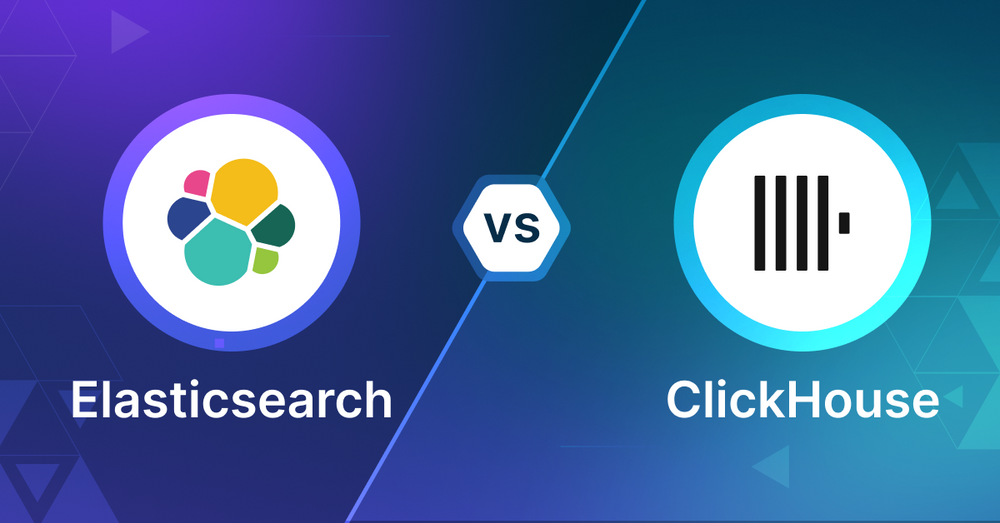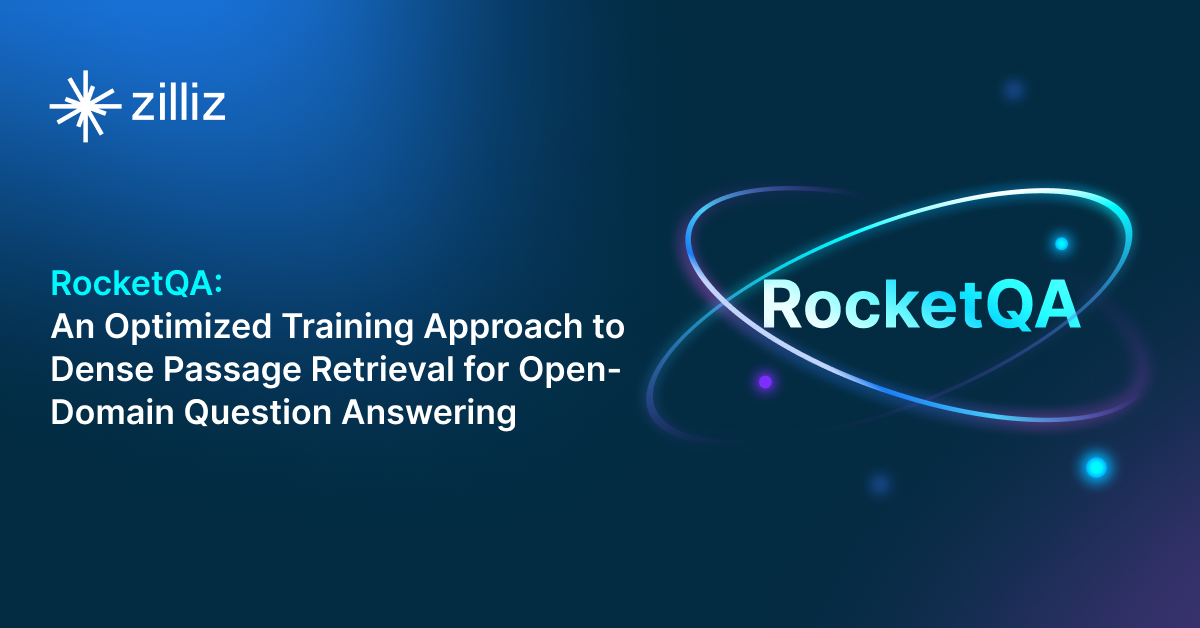Elasticsearch vs Clickhouse: Selecting the Right Database for GenAI Applications

As AI-driven applications evolve, the importance of vector search capabilities in supporting these advancements cannot be overstated. This blog post will discuss two prominent databases with vector search capabilities: Elasticsearch and Clickhouse. Each provides robust capabilities for handling vector search, an essential feature for applications such as recommendation engines, image retrieval, and semantic search. Our goal is to provide developers and engineers with a clear comparison, aiding in the decision of which database best aligns with their specific requirements.
What is a Vector Database?
Before we compare Elasticsearch vs Clickhouse, let's first explore the concept of vector databases.
A vector database is specifically designed to store and query high-dimensional vectors, which are numerical representations of unstructured data. These vectors encode complex information, such as the semantic meaning of text, the visual features of images, or product attributes. By enabling efficient similarity searches, vector databases play a pivotal role in AI applications, allowing for more advanced data analysis and retrieval.
Common use cases for vector databases include e-commerce product recommendations, content discovery platforms, anomaly detection in cybersecurity, medical image analysis, and natural language processing (NLP) tasks. They also play a crucial role in Retrieval Augmented Generation (RAG), a technique that enhances the performance of large language models (LLMs) by providing external knowledge to reduce issues like AI hallucinations.
There are many types of vector databases available in the market, including:
- Purpose-built vector databases such as Milvus, Zilliz Cloud (fully managed Milvus)
- Vector search libraries such as Faiss and Annoy.
- Lightweight vector databases such as Chroma and Milvus Lite.
- Traditional databases with vector search add-ons capable of performing small-scale vector searches.
Elasticsearch is a search engine based on Apache Lucene and Elasticsearch is a search engine based on Apache Lucene and ClickHouse is an open-source column-oriented database. Both have vector search capabilities as an add-on. This post compares their vector search capabilities.
Elasticsearch: Overview and Core Technology
Elasticsearch is an open source search engine built on top of the Apache Lucene library. It’s known for real time indexing and full text search so it’s a go to search for heavy applications and log analytics. Elasticsearch lets you search and analyse large amounts of data fast and efficiently.
Elasticsearch was built for search and analytics, with features like fuzzy searching, phrase matching and relevance ranking. It’s great for scenarios where complex search queries and real time data retrieval is required. With the rise of AI applications, Elasticsearch has added vector search capabilities so it can do similarity search and semantic search, which is required for AI use cases like image recognition, document retrieval and Generative AI.
Vector Search
Vector search is integrated in Elasticsearch through Apache Lucene. Lucene organises data into immutable segments that are merged periodically, vectors are added to the segments the same way as other data structures. The process involves buffering vectors in memory at index time, then serializing these buffers as part of segments when needed. Segments are merged periodically for optimization, and searches combine vector hits across all segments.
For vector indexing, Elasticsearch uses the HNSW (Hierarchical Navigable Small World) algorithm which creates a graph where similar vectors are connected to each other. This is chosen for its simplicity, strong benchmark performance and ability to handle incremental updates without requiring complete retraining of the index. The system performs vector searches typically in tens or hundreds of milliseconds, much faster than brute force approaches.
Elasticsearch’s technical architecture is one of its biggest strengths. The system supports lock free searching even during concurrent indexing and maintains strict consistency across different fields when updating documents. So if you update both vector and keyword fields, searches will see either all old values or all new values, data consistency is guaranteed. While the system can scale beyond available RAM, performance optimizes when vector data fits in memory.
Beyond the core vector search capabilities, Elasticsearch provides practical integration features that makes it super valuable. Vector searches can be combined with traditional Elasticsearch filters, so you can do hybrid search that mixes vector similarity with full text search results. The vector search is fully compatible with Elasticsearch’s security features, aggregations and index sorting, so it’s a complete solution for modern search use cases.
ClickHouse: Overview and Core Technology
ClickHouse is an open-source OLAP database for real-time analytics with full SQL support and fast query processing. It’s great for analytical queries because of fully parallelized query pipeline and can do vector search fast. It has high compression (customizable through codecs) so can store and query big datasets. One of its main advantages is that it can handle multi-TB datasets without being memory bound so it’s a great tool for users with large vector data. Also supports filtering and aggregation on metadata, so you can query vectors and their metadata.
ClickHouse has vector search functionality through SQL where vector distance operations are just like any other SQL function. So you can combine it with traditional filtering and aggregation. Great for use cases where you need to query vector data along with metadata or other information. Also has experimental Approximate Nearest Neighbour (ANN) indices for faster (but approximate) matching. And exact matching through linear scan over rows with parallel processing for speed and efficiency.
ClickHouse is great for vector search when you need to combine vector matching with metadata filtering or aggregation. Especially for very large vector datasets that need to be processed in parallel across multiple CPU cores. ClickHouse is also good when you need SQL support and your vector dataset is too big to fit in memory-only indices. Also if you already have related data in ClickHouse or don’t want to learn another tool to manage millions of vectors, ClickHouse can save you time and resources. Fast parallelized exact matching and handling big datasets is what ClickHouse is good for, so it’s for advanced search users.
ClickHouse is a general purpose platform for vector search, especially for large datasets that need parallel processing and when you combine vector search with SQL-based filtering and aggregation. Not as good as specialized vector databases for small memory-bound datasets or high-QPS scenarios but can handle complex queries including metadata so great for developers who know SQL and need fast vector search.
Key Differences
As vector search is becoming more popular in AI powered applications, choosing the right tool for your use case is key. Both Elasticsearch and ClickHouse have vector search capabilities but they serve different needs based on their architecture and design principles. Here’s a breakdown to help you decide.
Search Methodology
- Elasticsearch: Elasticsearch has vector search through HNSW (Hierarchical Navigable Small World) algorithm. This graph based approach connects similar vectors and allows for efficient nearest-neighbor search. HNSW supports incremental updates without need to rebuild the index, so it’s good for applications that require frequent updates. You can also combine vector similarity with traditional filters for hybrid search scenarios like blending keyword relevance and vector distance.
- ClickHouse: ClickHouse has vector search built-in within its SQL query engine. It supports exact vector matching via brute force (using parallel processing) and approximate nearest-neighbor (ANN) indices. So it’s good for use cases where metadata filtering or aggregation is required along with vector search. The SQL native approach is great for developers already familiar with relational databases.
Data
- Elasticsearch: Elasticsearch is designed for unstructured and semi-structured data. It’s great for managing and searching large text heavy datasets with features like full-text search, fuzzy matching and relevance ranking. Vector data is stored within its existing Lucene based architecture and provides strong consistency guarantees even for mixed data types like text and vectors.
- ClickHouse: ClickHouse is an OLAP database for structured and semi-structured data. It’s designed to handle massive datasets with high compression so it’s good for scenarios with multi-terabyte vector data. Vector operations integrate nicely with metadata and structured queries so it’s great for advanced analytics workflows.
Scalability and Performance
- Elasticsearch: Elasticsearch is good for in-memory vector search but can scale to disk based indices if needed. HNSW is efficient for high QPS (queries per second) environments but performance is best when vector data fits in memory. Elasticsearch is distributed so it can scale horizontally across nodes so it’s good for large scale applications.
- ClickHouse: ClickHouse can parallelize queries across multiple CPU cores which is great for large datasets. Its compression reduces storage costs and I/O performance. While its vector search is not as specialized as Elasticsearch’s, ClickHouse makes up for it with scalability for analytical workloads with vector data and metadata.
Flexibility and Customization
- Elasticsearch: Elasticsearch has extensive customization for hybrid search, index sorting and security features. It has tools like Kibana for visualization and Beats for data ingestion so it’s more flexible.
- ClickHouse: ClickHouse’s flexibility is in its SQL model. Developers can build complex queries combining vector operations, metadata filtering and aggregations without learning new query languages. Its customizable compression codecs allow users to optimize storage for specific workloads.
Integration and Ecosystem
- Elasticsearch: A mature ecosystem around Elasticsearch with data pipelines (Logstash), visualization (Kibana) and security. Broad adoption means it’s easy to find plugins, community support and managed services like Elastic Cloud.
- ClickHouse: ClickHouse integrates well with analytics and BI tools because of its SQL first design. While it doesn’t have the same level of community driven plugins as Elasticsearch, its OLAP focus makes it a natural fit for analytical applications with high performance vector search.
Ease of Use
- Elasticsearch: Elasticsearch has great documentation and its RESTful APIs are developer friendly. But setup and maintenance can be complex in distributed environments.
- ClickHouse: ClickHouse is developer friendly for those familiar with SQL. Installation and management is relatively simple but fine tuning for vector search performance requires expertise.
Cost
- Elasticsearch: Operational costs can increase with Elasticsearch because of its memory hungry nature, especially when scaling for high QPS use cases. Managed services like Elastic Cloud can simplify operations but add to the cost.
- ClickHouse: ClickHouse’s high compression and parallel processing is cost effective for large datasets. It can operate without memory bound indices which can further reduce infrastructure costs.
Security
- Elasticsearch: Elasticsearch has robust security features: role based access control, encryption at rest and fine grained permissions. These features are well integrated into the ecosystem so it meets enterprise grade requirements.
- ClickHouse: ClickHouse has access control, SSL encryption and audit logs. Enough for most applications but less extensive than Elasticsearch’s enterprise features.
When to use Elasticsearch
Elasticsearch is for use cases where hybrid search is required, full text search and vector similarity. HNSW based vector search is optimized for real-time, high QPS environments so good for AI powered document retrieval, e-commerce recommendation systems and generative AI. With a mature ecosystem, built in security and lots of integrations to choose from, Elasticsearch is great for distributed environments where scalability and ops ease is key.
When to use ClickHouse
ClickHouse is for scenarios where you have massive datasets that need parallel processing and storage, analytics heavy applications or large scale AI workloads. SQL native approach makes it easy to combine vector search with metadata filtering and aggregations so good for developers who are familiar with relational databases. ClickHouse can handle multi-terabyte datasets without memory bound indices, so it is cost efficient and high performance for queries that mix vector and structured data.
Summary
Elasticsearch and ClickHouse are both good for vector search but for different use cases. Elasticsearch is good for real-time hybrid search with a mature ecosystem and user friendly APIs and ClickHouse is good for large scale analytics with SQL centric workflows and scalable architecture. Choose between them based on your use case. Do you need real-time search with many features or scalable analytics for massive datasets. Knowing your data types, query patterns and performance requirements will guide the right decision.
Read this to get an overview of Elasticsearch and Clickhosue but to evaluate these you need to evaluate based on your use case. One tool that can help with that is VectorDBBench, an open-source benchmarking tool for vector database comparison. In the end, thorough benchmarking with your own datasets and query patterns will be key to making a decision between these two powerful but different approaches to vector search in distributed database systems.
Using Open-source VectorDBBench to Evaluate and Compare Vector Databases on Your Own
VectorDBBench is an open-source benchmarking tool for users who need high-performance data storage and retrieval systems, especially vector databases. This tool allows users to test and compare different vector database systems like Milvus and Zilliz Cloud (the managed Milvus) using their own datasets and find the one that fits their use cases. With VectorDBBench, users can make decisions based on actual vector database performance rather than marketing claims or hearsay.
VectorDBBench is written in Python and licensed under the MIT open-source license, meaning anyone can freely use, modify, and distribute it. The tool is actively maintained by a community of developers committed to improving its features and performance.
Download VectorDBBench from its GitHub repository to reproduce our benchmark results or obtain performance results on your own datasets.
Take a quick look at the performance of mainstream vector databases on the VectorDBBench Leaderboard.
Read the following blogs to learn more about vector database evaluation.
Further Resources about VectorDB, GenAI, and ML
- What is a Vector Database?
- Elasticsearch: Overview and Core Technology
- ClickHouse: Overview and Core Technology
- Using Open-source VectorDBBench to Evaluate and Compare Vector Databases on Your Own
- Further Resources about VectorDB, GenAI, and ML
Content
Start Free, Scale Easily
Try the fully-managed vector database built for your GenAI applications.
Try Zilliz Cloud for FreeKeep Reading

Why Context Engineering Is Becoming the Full Stack of AI Agents
Context engineering integrates knowledge, tools, and reasoning into AI agents—making them smarter, faster, and production-ready with Milvus.

RocketQA: Optimized Dense Passage Retrieval for Open-Domain Question Answering
RocketQA is a highly optimized dense passage retrieval framework designed to enhance open-domain question-answering (QA) systems.

GPL: Generative Pseudo Labeling for Unsupervised Domain Adaptation of Dense Retrieval
GPL is an unsupervised domain adaptation technique for dense retrieval models that combines a query generator with pseudo-labeling.
The Definitive Guide to Choosing a Vector Database
Overwhelmed by all the options? Learn key features to look for & how to evaluate with your own data. Choose with confidence.